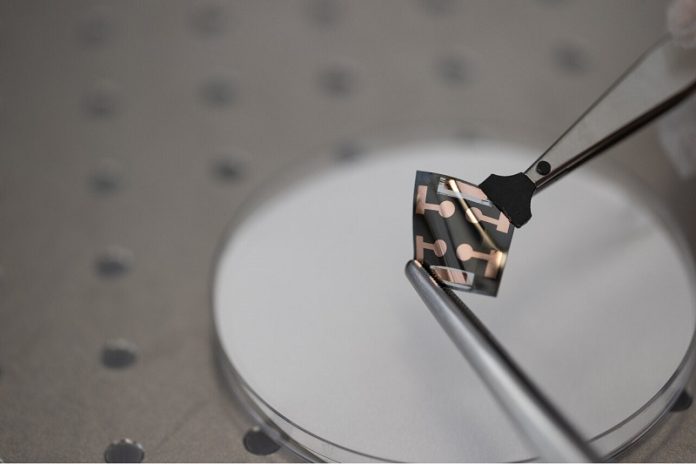
Researchers from Australia have made an exciting discovery about solar cells in space.
They found that perovskite solar cells, which were damaged by proton radiation while orbiting Earth, can recover up to 100% of their original efficiency through a process called annealing.
The study, published in the journal Advanced Energy Materials, utilized advanced spectroscopy techniques to analyze the cells and shed light on their behavior.
In space, lightweight perovskite solar cells are considered ideal for powering low-cost space equipment due to their affordability, high efficiency, and ability to withstand radiation.
Previous studies focused on heavier substrates, but this project pioneered the use of ultrathin sapphire substrates, which are both radiation-resistant and optically transparent.
To mimic the radiation exposure that solar cell panels experience in low-Earth orbit, the researchers subjected the cells to a beam of high-energy protons.
They discovered that cells containing a specific hole transport material (HTM) and dopant were less radiation-tolerant compared to others.
In particular, the HTM compound called Spiro-OMeTAD and the dopant lithium bis(trifluoromethanesulfonyl)imide (LiTFSI) were found to induce defects on the cell surface when exposed to proton radiation.
Through chemical analysis, the team identified that fluorine diffusion from LiTFSI caused the introduction of defects to the cell’s surface, leading to degradation and efficiency losses over time.
However, they also found that cells without Spiro-OMeTAD and LiTFSI did not experience such damage. Furthermore, the degradation caused by proton radiation could be reversed through heat treatment in a vacuum.
The radiation-resistant cells featured either Polybis(4-phenyl)(2,5,6-trimethylphenyl) or a combination of PTAA and 2,7-Dioctyl[1]benzothieno[3,2-b][1]benzothiophene (C8BTBT) as the hole transport material, with tris(pentafluorophenyl)borane (TPFB) as the dopant. This discovery paves the way for the development of lightweight and cost-effective solar cells for future space applications.
Solar cells in space have demonstrated their ability to repair themselves, thanks to the innovative work of Australian researchers.
By understanding the behavior of perovskite solar cells and carefully selecting the materials used, these cells can recover their original efficiency even after being damaged by radiation.
This breakthrough brings us closer to a future where space missions can rely on durable and efficient solar energy, opening up exciting possibilities for space exploration and technology.
Follow us on Twitter for more articles about this topic.
Source: ARC.



